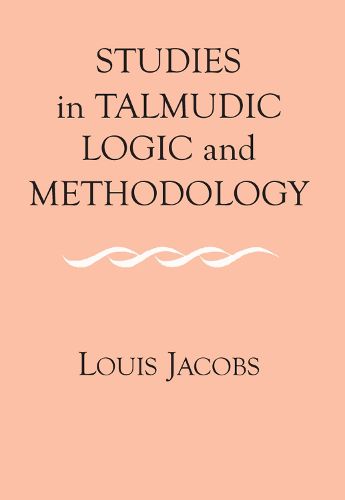Readings Newsletter
Become a Readings Member to make your shopping experience even easier.
Sign in or sign up for free!
You’re not far away from qualifying for FREE standard shipping within Australia
You’ve qualified for FREE standard shipping within Australia
The cart is loading…






In the traditional Talmudic Methodologies, the subjects of Talmudic logic and methodology are generally treated together. With a few notable exceptions, there has been little attempt at a systematic presentation of such matters as the structure of the Talmudic arguments, the division of the Sugya into its component parts, the methods of Talmudic reasoning, and the literary style and character of the Amoraic debates. This book notes some of the problems in this field and suggests some tentative solutions. The first part sheds light on Talmudic logic, in particular suggesting the ancients were aware of the process of Induction. The second part examines the literary analysis of the Amoraic literature, and argues that the Gemara in its present form is a ‘contrived’ literary product of great skill in which the older material used has been reshaped by methods similar to literary artists throughout the ages. Although the book is presented for the considerations of students of the Talmud, it is of interest to the layman who desires gaining a closer acquaintance with the full flavour of Talmudic reasoning.
$9.00 standard shipping within Australia
FREE standard shipping within Australia for orders over $100.00
Express & International shipping calculated at checkout
In the traditional Talmudic Methodologies, the subjects of Talmudic logic and methodology are generally treated together. With a few notable exceptions, there has been little attempt at a systematic presentation of such matters as the structure of the Talmudic arguments, the division of the Sugya into its component parts, the methods of Talmudic reasoning, and the literary style and character of the Amoraic debates. This book notes some of the problems in this field and suggests some tentative solutions. The first part sheds light on Talmudic logic, in particular suggesting the ancients were aware of the process of Induction. The second part examines the literary analysis of the Amoraic literature, and argues that the Gemara in its present form is a ‘contrived’ literary product of great skill in which the older material used has been reshaped by methods similar to literary artists throughout the ages. Although the book is presented for the considerations of students of the Talmud, it is of interest to the layman who desires gaining a closer acquaintance with the full flavour of Talmudic reasoning.